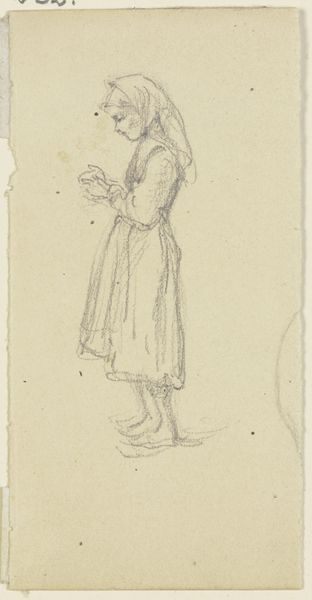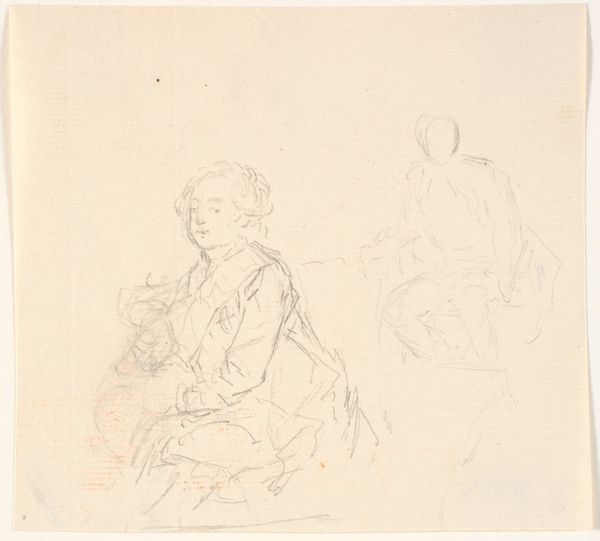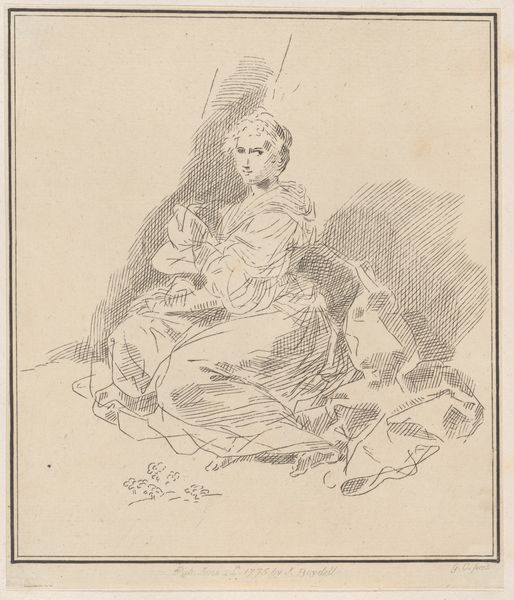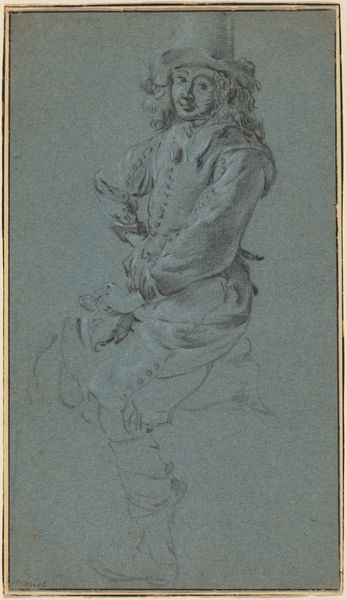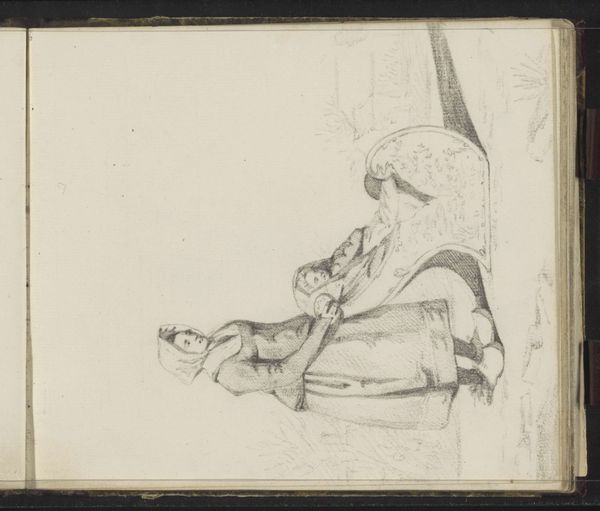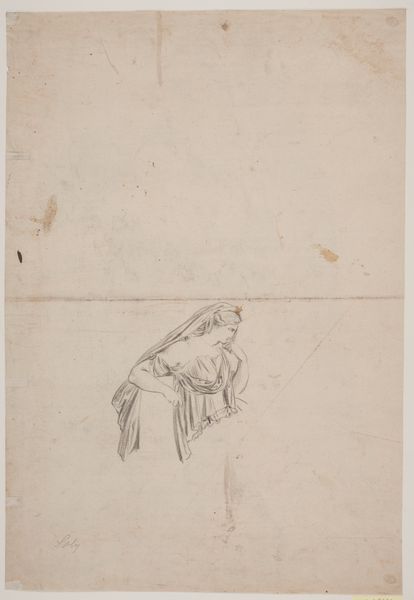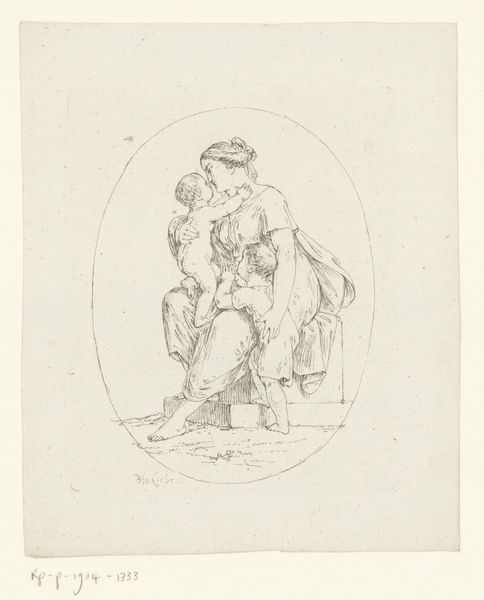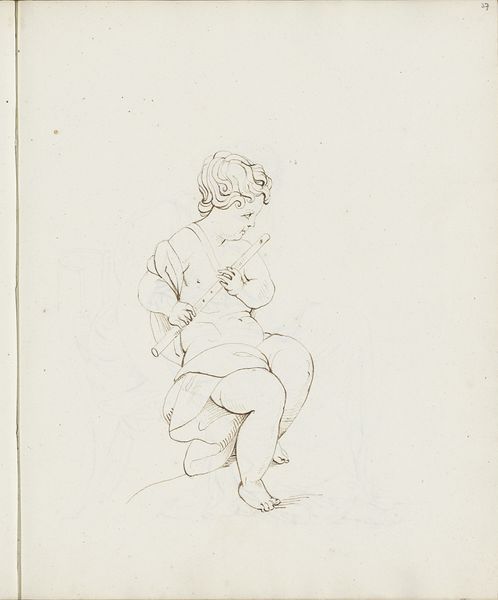
drawing, print, paper, graphite
#
portrait
#
drawing
# print
#
figuration
#
paper
#
graphite
Dimensions: 202 × 155 mm
Copyright: Public Domain
Curator: Look at this drawing, likely produced between 1750 and 1850 and attributed to Antonio da Correggio, it is titled "Cardinal Virtues or Saint Euphemia," and rendered in graphite on paper. What strikes you initially? Editor: The subtlety of the medium. It's just graphite on paper, a seemingly simple process, but it evokes a remarkable lightness. I wonder about the paper itself. Curator: The figure, gazing upward, holds two flutes or pipes. Traditionally, music symbolizes harmony, suggesting an ordered soul or balanced virtue. The upward gaze suggests transcendence. Does that resonate for you? Editor: It does. But my eyes are drawn to the implied labor here. Consider the cost and accessibility of high-quality paper in the 18th or 19th century. It suggests a specific kind of patronage or artistic freedom not available to everyone. Curator: The attribution to Correggio, if accurate, also adds layers of meaning. His emphasis on grace and sweetness became hallmarks, especially influential during the Baroque and Rococo periods. Seeing a possible sketch connects us to that legacy. Editor: Absolutely. And the print quality speaks to that connection too. This wasn't mass-produced. This suggests an artisan engaged with reproductive techniques. Curator: And what do you make of the suggested duality in the title, "Cardinal Virtues or Saint Euphemia?" Does this expand or muddy any symbolic reading? Editor: It invites multiple interpretations. Virtues are abstract concepts embodied through symbols. Euphemia, a saint, connects those virtues to a specific narrative of faith and martyrdom, grounding the ideals in historical and social contexts. Curator: Indeed. I find the drawing particularly affecting in its quiet confidence. Its use of implied religious themes offers a chance to appreciate artistic traditions from the Renaissance to the 19th century. Editor: For me, understanding the conditions in which the artist was working is very interesting. How labor and access to material can inform our appreciation.
Comments
No comments
Be the first to comment and join the conversation on the ultimate creative platform.



